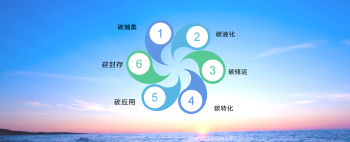免职声明:本网站为公益性网站,部分信息来自网络,如果涉及贵网站的知识产权,请及时反馈,我们承诺第一时间删除!
This website is a public welfare website, part of the information from the Internet, if it involves the intellectual property rights of your website, please timely feedback, we promise to delete the first time.
电话Tel: 19550540085: QQ号: 929496072 or 邮箱Email: Lng@vip.qq.com
摘要:随着以中国、印度为首的新经济体高速发展,亚太地区油气需求增长迅速,目前已超过美国和欧洲,成为世界最大的油气消费中心。全球油气消费呈现出美国、欧洲和亚太三足鼎立的局面。 2012年,亚太地区石油消费量为13.88亿吨,占全球33.6%;天然气消费量为6250亿立方..
|
随着以中国、印度为首的新经济体高速发展,亚太地区油气需求增长迅速,目前已超过美国和欧洲,成为世界最大的油气消费中心。全球油气消费呈现出美国、欧洲和亚太三足鼎立的局面。 2012年,亚太地区石油消费量为13.88亿吨,占全球33.6%;天然气消费量为6250亿立方米,占全球18.8%。国际能源署预计,2020年后,全球地区间98%以上的石油净出口流向亚太地区,同时,这一地区超过北美,成为全球第一大天然气消费区。 The demand of oil and gas in Asia-Pacific grows rapidly due to the high-speed development of emerging economies such as China and India. Today, this region has exceeded the United States and Europe to be the biggest oil and gas consumption center around the world, creating a new map of global consumption. In 2012, the oil and gas consumption here respectively reached 1.388 billion tons and 625 billion cubic meters, accounting for 33.6% and 18.8% of the total global consumption. As IEA predicts, over 98% of the world's crude oil will be exported to Asia-Pacific in 2020. Meanwhile, this region will replace North America as the biggest gas consumer in the world. 油气工业(Industry) 【油气资源】 (Resources) 亚太地区油气资源并不丰富,相对贫油,但天然气潜力较大。在近年来的新发现中,天然气占新探明储量的85%以上,并且海上的新发现远高于陆上。 截至2012年年底,亚太地区石油探明储量 为55亿吨,占全球探明储量的2.5%;天然气探明储量为15.5万亿立方米,占全球探明储量的8.2%。 Asia-Pacific is not rich in oil but has a relatively big potential for natural gas. The gas reserves account for more than 85% of the newly proven reserves, and the offshore reserves are much more than the onshore reserves. 【产量和消费量】 (Production & Comsuption) 亚太地区的油气消费量远高于产量。2012年,亚太地区石油产量为3.97亿吨,占全球9.6%;天然气产量为4902亿立方米,占全球14.5%。石油消费量为13.88亿吨,占全球33.6%;天然气消费量为6250亿立方米,占全球18.8%。 与油气产区对油价的高度敏感性不同,亚太地区经济与油气消费量的联系更加紧密,实现了GDP与油气消费量同期稳步增长。 In Asia-Pacific, the consumption of oil and gas is much higher than the production. 【油气贸易】 (Trade) 受到资源禀赋限制,亚太地区油气消费依赖进口。统计显示,2012年,亚太石油进口约占全球进口总额的49%,天然气进口约占27%,且呈持续增长趋势。 针对石油进口严重依赖中东、进口途径严重依赖马六甲海峡等问题,亚太地区油气消费大国正积极推进能源供应多元化战略,加强同资源丰富国家的合作,并寻找进口替代路径。 Restricted by its resource endowment, the oil consumption in Asia-Pacific has relied heavily on import from the Middle East, as well as the Strait of Malacca. In order to change the status, the oil consuming countries have taken diversified energy supply strategies. 【炼油情况】 (Refining) 亚太地区是全球最大的炼油生产区。2012年,亚太炼油能力占世界总炼油能力的32.6%。据美国《油气杂志》统计,2012年世界前10大炼油厂中,亚太地区占得7席。其中,韩国SK公司的韩国蔚山炼厂排在第2位,年加工能力达4200万吨;中国台湾台塑石化公司的中国台湾麦寮炼厂排在第10位,年加工能力达2700万吨。 Asia-Pacific is the world's largest region for producing regined products. In 2012, the refining capacity in this area reached 32.6% of the total global capacity. 【LNG生产】 (LNG Production) 亚太地区不仅是全球最大的LNG消费中心,同时也是仅次于中东的重要供应基地。据液化天然气进口公司国际组织统计,2012年,在全球LNG出口国排名中,马来西亚、澳大利亚和印度尼西亚分列第2、3、5名。 Asia-Pacific is not only the biggest LNG consumer in the world, but also an important supplier next to the Middle East. According to GIIGNL, Malaysia, Australia and Indonesia, respectively ranked 2nd, 3rd and 5th in the world in terms of LNG exporter in 2012. 主要资源国(Major resource countries) 【中国(China)】 中国是亚太地区最大的油气生产国,油气资源主要集中在松辽盆地、鄂尔多斯盆地等七大盆地中。 截至2012年年底,中国石油探明储量为24亿吨,居世界第14位;天然气探明储量为3.1万亿立方米,居世界第13位。2013年,油气产量再创历史新高,同比增长4.6%。 China is the largest oil producer in Asia-Pacific. Its oil and gas reserves are mainly found in Songliao Basin, Erdos Basin and other five basins. By the end of 2012, its proved oil reserves reached 2.4 billion tons, ranking 14th in the world; its proven gas reserves reached 3.1 trillion cubic meters, ranking 13th in the world. 【印度尼西亚(Indonesia)】 印度尼西亚是亚太地区唯一的欧佩克石油生产国,约有60个沉积盆地,其中73%位于海上。其主要含油气区包括苏门答腊油气区、爪哇油气区和东加里曼丹油气区等。 Indonesia is the only OPEC member in Asia-Pacific, with Sumatra, Java and East Kalimantan as the major oil and gas producing areas. 【马来西亚(Malaysia)】 马来西亚的石油储量大多分布在马来盆地、沙捞越盆地和沙巴盆地,主要油田有塔皮斯油田等。天然气产量则大多来自东马来西亚,特别是沙捞越州近海地区。 In Malaysia, oil reserves are mostly found in Malay Basin, Sarawak Basin and Sabah Basin. And gas production is mostly from East Malaysia, especially Sarawak coastal areas. 【澳大利亚(Australia)】 澳大利亚拥有丰富的天然气资源。截至2012年年底,其天然气探明储量达到3.8万亿立方米,居世界第10位、亚太地区第1位。 澳大利亚的油气资源主要集中在西部大陆架的卡纳尔文、波拿巴特和布劳斯盆地,以及南澳大利亚的吉普斯兰盆地。 澳大利亚的陆上盆地油气资源相对较少,但蕴含着极其丰富的非常规油气资源。 In 2012, Australia's proved gas reserves ranked 10th in the world, 1st in Asia-Pacific. Resources are mainly discovered in 4 basins located in the continental shelves of western and southern Australia. 【印度(India)】 20世纪80年代以来,印度油气工业稳步发展。其主要含油气区分布于西海岸的孟买盆地、坎贝盆地和阿萨姆盆地等。 India's oil and gas production mainly comes from Mumbai Basin, Cambay Basin and Assam Basin, loacted in the west coast of India. 油气战略(Strategies) 过去10年,亚太地区是国际政治舞台上的主角之一。这个总人口近30亿、经济总量占全球一半以上的地区,是金融危机后牵引世界经济的“火车头”。 与旺盛的消费需求相比,这里的油气资源并不丰富,很多国家面临较大的油气保供压力。同时,由于历史认识等问题,亚太地区未能像欧洲那样建立起统一的能源市场形成对外合力,长期受“亚洲溢价”问题困扰。因此,“保持能源稳定可持续供应,提升能源自给能力”,便成为亚太地区能源战略的核心目标。 以中、日、韩、印为代表的消费大国,积极推行能源供应多元化和节能减排战略。对外,加强同资源国合作,优化进口来源,海陆并举寻找进口替代路径。对内,大力推行节能减排措施,基于自身资源禀赋选择重点发展的替代能源。 Asia-Pacific has become the engine of the world economy after the global financial crisis. Compared with the exuberant energy demand, the oil and gas reserves here are not rich, which brings great pressure on energy supply in most countries. Therefore, it has become a strategic goal for the region to maintain stable and sustainable energy supply, and to enhance its own supply capacity. In order to achieve the goal, major consumers in this region, represented by China, Japan, Korea and India, adopted a diversified energy supply strategy and made great efforts on energy conservation as well as emission reduction. These countries value cooperations with resource countries, and apart from taking energy saving and emission reduction measures, they invest in alternative energies with consideration of their own situation. |












